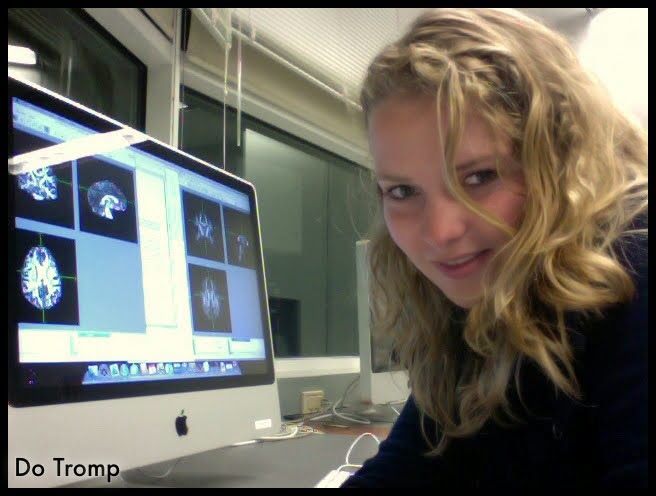DTI Processing - Distortion Correction
Before one can start playing around with fiber tracts in for example Trackvis, as shown below, there are some important steps that are part of the preprocessing pipeline. These steps might initially sound much less exciting, they are of great importance to make sure the data is clean.
Eddy current correction
In DTI, diffusion-weighting gradients can lead to eddy currents, which results in artifacts in the brain image. The wikipedia description of eddy currents notes:
When you can combine the volumes together to compile the fractional anisotropy map effects of eddy current can become apparent. The image below shows on the right the effect of eddy current correction as shown by Poonwalla and Xiaohong:
Eddy currents (also called Foucault currents[1]) are circular electric currents induced within conductors by a changing magnetic field in the conductor, due to Faraday's law of induction.When they happen in the acquisition of diffusion images such artifacts may include shear, false fiber tracking, enhanced background, image intensity loss, and image blurring. These distortions are different for different gradient directions. FSL developed a tool called Eddy Current Correction that corrects for these distortions, and for simple head motion, using affine registration to a reference volume. You can see an example made by FSL of how eddy correction influences each volume here:
 |
| Left before eddy correction, right after (Source: FSL) |
When you can combine the volumes together to compile the fractional anisotropy map effects of eddy current can become apparent. The image below shows on the right the effect of eddy current correction as shown by Poonwalla and Xiaohong:
 |
| Left before eddy correction, right after |
EPI/Fieldmap correction
EPI distortion is caused by inhomogeneities in the applied magnetic field. An inhomogeneous magnetic field corrupts the spatial encoding gradient, which results in geometric distortion and loss of signal. If you acquired a fieldmap in addition to your diffusion sequence you can use FSL's FUGUE to help produce and apply the fieldmap.
In an extreme case, as seen below in a non-human primate example, the distortion is pretty severe (see middle image). The application of the fieldmap (left) allows for the unwarping of the image to the one shown right. All images examples are from non-human primates, who due to their smaller head size often suffer from much larger EPI distortions.
If you acquired two diffusion sequences with opposite polarities you can combine both sequences to counter the distortions induced by the EPI sequence. A great tool that can aid with this is FSL's TOPUP. This tool is able to unwarp the images by averaging the distortions that are more pronounced in the different polarity acquisitions.











